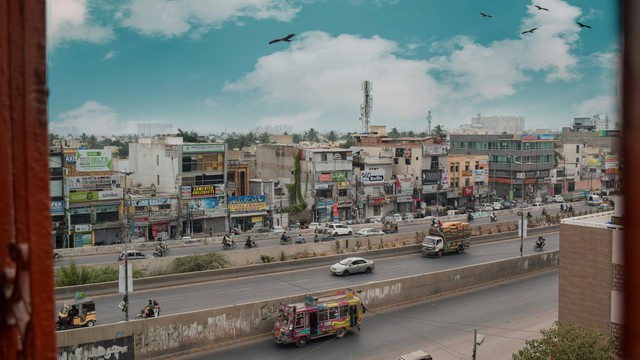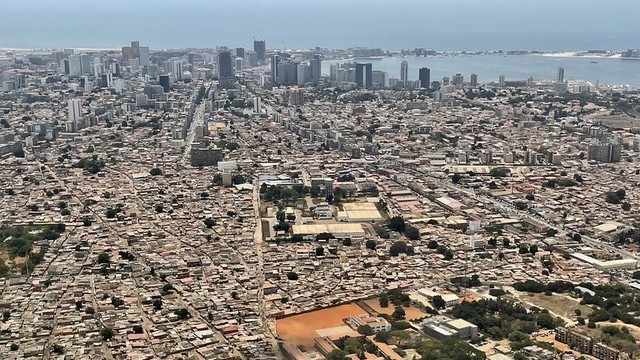Integrating four urban agendas for climate resilience
Cities are crucial to building climate resilience but all too often priorities at local, national and global level are far from aligning. We look at the risk this mismatch poses for city residents now – and in an uncertain future


An urban slum in Hanoi, Viet Nam (Photo: UN Photo/Kibae Park, via Flickr, CC BY-NC-ND 2.0)
When a high-level panel reported (PDF) to the then UN secretary-general, Ban Ki-moon, on the post-2015 development agenda they concluded that it must be relevant for urban dwellers stating: “Cities are where the battle for sustainable development will be won or lost”.
Amid all the hundreds of global goals and agendas agreed by national governments accumulated over the past few decades (most through the UN and mostly ignored), there is little attention given to how they fit together. Or how they affect other agendas for good or bad. One exception to this is some attention to overlaps between adaptation and mitigation, but little of this spurs action at scale on the ground.
And everywhere the issue of who gets land is an ever-present conflict of interests. The city’s housing department, desperate for well-located and affordable sites, will often be fighting for the same land as the bodies responsible for parks and other public spaces, as well as those developing flood protection measures. Meanwhile, there is the often powerful real estate lobby seeking land for their ‘gated communities’, office developments or shopping malls.
This blog looks at connections between four agendas: human development, disaster risk reduction and preparedness, climate change adaptation and climate change mitigation – and how more coherence can be achieved across them.
The first two are usually accepted as local government responsibilities, although these responsibilities are often unmet or inadequately met. National or provincial/state agencies may have key roles in disaster response, but most of the actions needed for disaster risk reduction fall within local government responsibilities.
The four urban agendas: human development, disaster risk reduction and preparedness, climate change adaptation and climate change mitigation
1. Human development
The term is used here to cover any reduction in the deprivations caused or exacerbated by the many dimensions of poverty. This includes the universal provision for what the Intergovernmental Panel on Climate Change (IPCC) calls risk-reducing infrastructure (piped water, all-weather roads and paths, storm and surface drainage, electricity, and infrastructure for good sanitation), services (solid waste collection, health care, schools and childcare, emergency services, safety nets, and policing), secure housing that meets health and safety standards, and a rule of law that includes policing and ‘voice’ (so pressure can be brought at local government level).
The realisation of all these combined would represent a transformation in the health, living conditions and level of risk for very large sections of the world’s current and future urban populations. Good quality, community-led informal settlement upgrading is a large part of this. And as mentioned above, most human development goals contribute to disaster risk reduction, especially if their provision takes account of disaster risk.
2. Disaster risk reduction
There are many large overlaps in these first two agendas in addressing local risks. Disaster risk reduction and preparedness should be fully integrated into urban development planning and thus go far beyond just emergency response. But in many cities, disaster management is regarded as a relief and welfare response – not a key influence on a city’s development plans and investment priorities.
Many of the measures that reduce disaster risk are there to supply everyday needs. For instance, good quality health care and emergency services that meet everyday needs are also a critical component of disaster risk reduction and rapid, effective post-disaster response.
3. Climate change adaptation
There are large overlaps across the first three agendas. All are concerned with addressing local risks and increasing local resilience, and so need local organisations to implement. Local citizen and civil society pressure, organisation and capacity to act is critical.
This encourages us to think about all the risks cities or specific urban populations, enterprises or groups face, and what would make them resilient to these risks or able to reduce or remove them. Remove the hazard and there is no risk. Remove the risk and there is no vulnerable population.
For most cities, this clearly has strong development components. It also has strong disaster risk reduction components. Indeed, one of the central goals of disaster risk reduction is a capacity to build greater resilience.
So many different aspects of cities need to be resilient including housing stock, industries, networked infrastructure and services (transport, communications, energy, water, waste water), as well as their ecosystems which need to be protected and managed to deliver a sustained supply of ecosystem services (such as drinking water).
4. Climate change mitigation
There is little direct overlap between climate change mitigation priorities and the other three agendas. This is borne out by the IPCC’s list of the most effective measures for reducing greenhouse gas emissions.
There may be some benefit from some mitigation measures – for instance improved public transport or better air quality. But even when they work in the same sector, there can still be differences in what the agendas focus on. For instance, mitigation-focused public transport investment (use of alternative fuels or electric vehicles) does not necessarily deliver better quality, or cheaper transport services.
Mitigation usually falls outside the formal responsibilities of city governments (although this may apply to adaptation too – and it may change). Mitigation brings no immediate benefits to local populations – its focus is on global (except where there are co-benefits and this may impose unwanted costs or restrict desired activities).
For that reason, many mitigation measures may face local opposition in a way that the other three agendas do not. It will also compete with other city or city-region uses for land.
Click on the images to expand them. This gallery shows how the urban agendas overlap in different ways. An accessible version in video format is available on IIED's YouTube channel and below
Mitigating the scale of future risk
But mitigation is essential to the other three agendas because without it, the scale and nature of risk in the future threatens progress in all these (and all other) agendas.
Mitigation is essential to the other three agendas because without it, the scake and nature of risk in the future threatens progress in all of the other urban agendas
An issue to which we return constantly is that three of the four agendas are about identifying and acting on local risks – and much of the responsibility falls to local government. Development, disaster risk reduction and climate change adaptation share the common goal of safeguarding a city population’s health and assets, even if they see risk through different lenses.
So we need local governments with the knowledge and capacity to act across the development/disaster risk reduction/climate change adaptation agendas, being genuinely responsive to the priorities and needs of all residents.
But in the end, local resilience must also include climate change mitigation – as even the most resilient city cannot protect itself against disruptions within the global production system and against ever more dangerous climate change effects.
This blog draws heavily on Cities on a Finite Planet (2016) by Fernando Aragón-Durand, Jan Corfee-Morlot, Robert B R Kiunsi, Mark Pelling, Debra Roberts, William D. Solecki, Jo da Silva, David Dodman, Andrew Maskrey, Sumetee Pahwa Gajja, Rafael Tuts, Garima Jain, Amir Bashir Bazaz, David Satterthwaite, Aromar Revi, Jorgelina Hardoy, Luz Stella Velásquez Barrero, Sheridan Bartlett, Shobhakar Dhakal, Sari Kovats and Alice Sverdlik.






